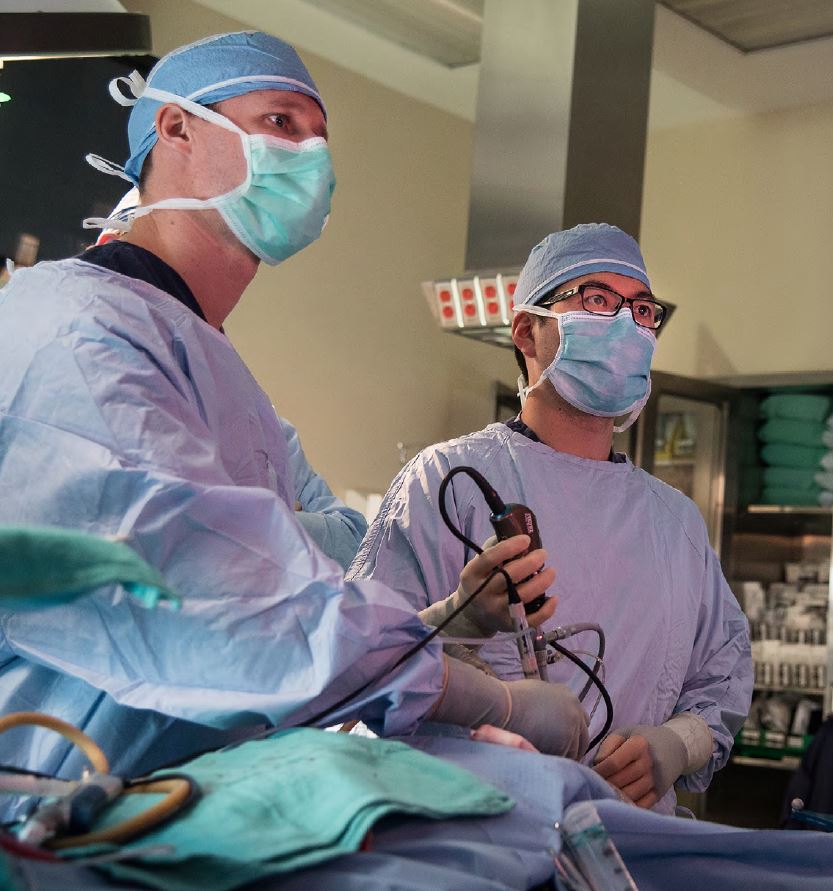Pituitary Tumor
What is a pituitary tumor?
A pituitary tumor, or pituitary adenoma, is a fairly common benign growth that occurs in the pituitary gland. Tiny, microscopic pituitary adenomas are found in up to 20% of the population, although a much, much smaller percentage of patients will require treatment. The tumor can sometimes release active hormones associated with pituitary function; on the other hand, some tumors may cause no symptoms. Many of early tumors can be found incidentally during a routine workup of another problem. If a tumor with no symptoms is left alone, it can grow in size and eventually push on the optic nerve or other brain structures.
What are the symptoms of a pituitary tumor?
Some symptoms of pituitary adenoma are caused by the bulk of tumor as it pushes on adjacent structures:
- Headache
- Vision changes, including blurry vision, double vision, loss of peripheral vision and even blindness
- Dizziness
Pituitary tumors that secrete active hormones cause additional symptoms:
- TSH-secreting tumors cause hyperthyroidism.
- Growth-hormone secreting tumors produce acromegaly, which is characterized by large hands and feet as well as many other changes in the body.
- ACTH-secreting tumors lead to Cushing’s disease, which causes weight gain, bruising and generalize weakness.
- Prolactin-secreting tumors produce prolactin. Excessive prolactin secretion can cause a loss of menstruation and breast milk production in women. In men, excessive prolactin secretion suppresses testosterone production, leading to a loss of sex drive.
How is it diagnosed?
A pituitary tumor is commonly diagnosed through a MRI with contrast. The imaging study will help the physician localize and characterize the tumor. Additional blood tests are necessary to determine if the tumor is secreting active hormones.
How is a pituitary tumor treated?
Treatment of pituitary adenoma involves physicians from multiple specialties, who will work together to treat the patient. The ophthalmologist will assess vision. The endocrinologist will diagnosis and treat any endocrine system disorders triggered by the tumor or its treatment. Some tumors can be treated with medicine, but often surgery is necessary for treatment and diagnosis. Most commonly, pituitary surgery is performed by a surgical team consisting of an otorhinolaryngologist and a neurosurgeon. The otorhinolaryngologist will provide access through the nose for the neurosurgeon who will remove the tumor. Rarely some tumors may be treated with radiation.
If the tumor is large and compresses vital structures, surgery is usually recommended. On occasion, a large tumor can bleed and lead to a condition known as apoplexy. In these situations, you may require emergency surgery.
A pituitary tumor can be removed through a minimally invasive endoscopic approach that does not require any incisions. With the collaboration between the neurosurgeon and otorhinolaryngologist (ENT surgeon), the pituitary gland is accessed from the nose and sphenoid sinus. The otorhinolaryngologist will create the approach to the tumor and the neurosurgeon will remove the tumor. After tumor removal, the boundary between the brain and nose is repaired with dural substitutes, nasal grafts or sometimes fat from another part of the body. At times, there may be a brain fluid leak, which is also repaired during the same procedure.

After the surgery, patients are monitored in the ICU for at least one day. Common symptoms following the surgery are headaches, oozing from your nose, sinus pressure and nasal congestion. The nasal symptoms are similar to a sinus infection. Taste and smell function will also be decreased for several weeks after surgery. Recovery after minimally invasive pituitary surgery is quicker and easier than recovery after the traditional techniques.
What happens after discharge from the hospital?
Patients will see both the otorhinolaryngologist and neurosurgeon. The ENT will monitor nasal and sinus healing. During office visits, he or she will remove clots and debris from the sinus cavities. The neurosurgeon will monitor the pituitary gland region with postoperative MRIs. Additional follow-up with an endocrinologist is also necessary.

